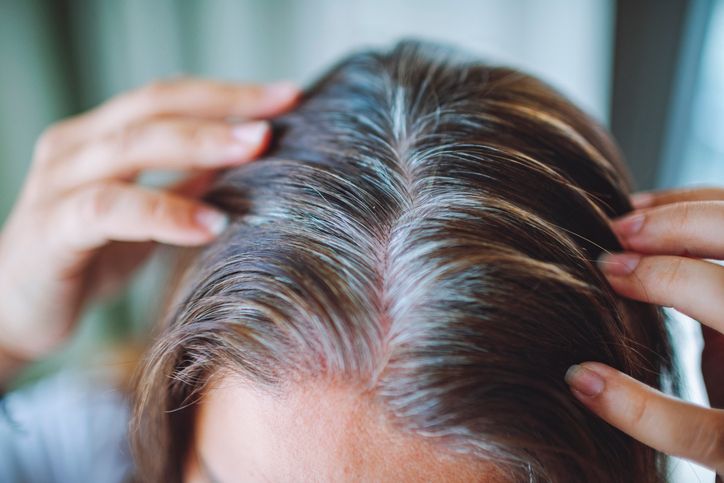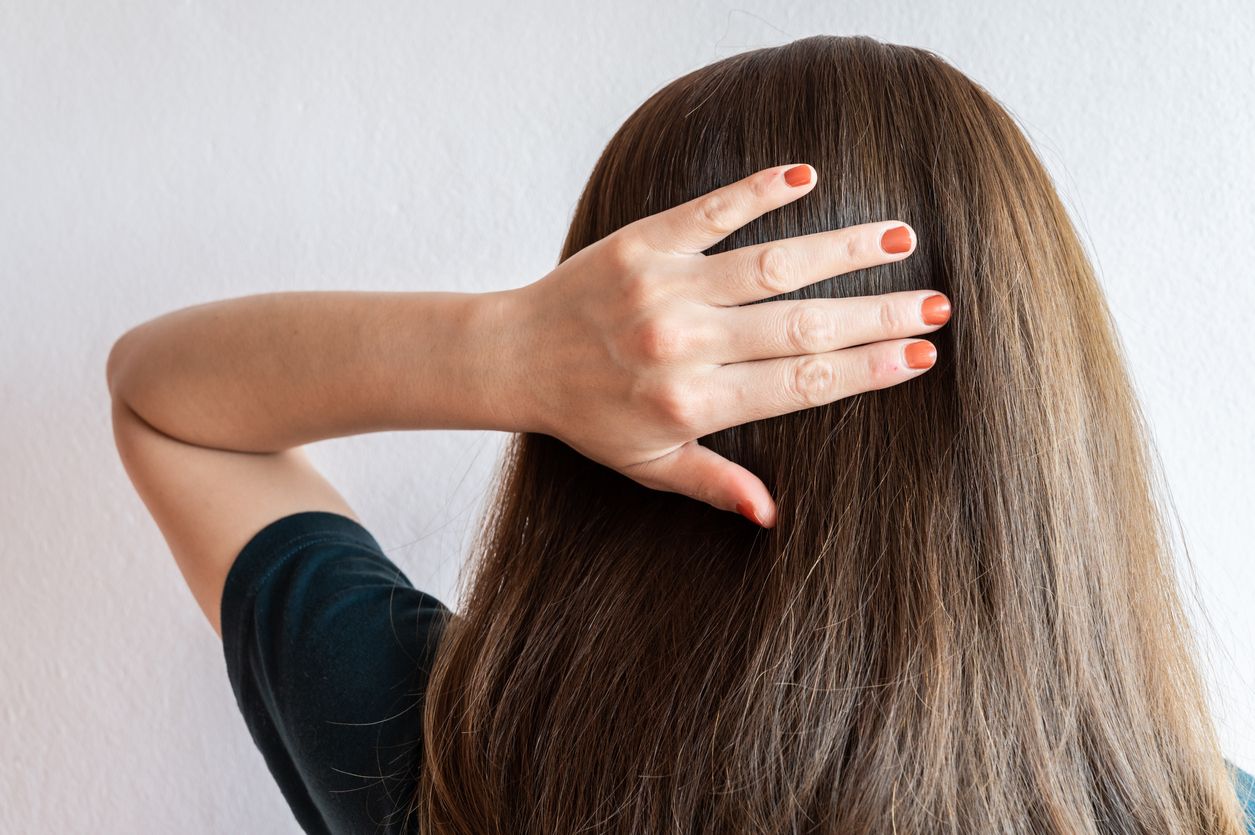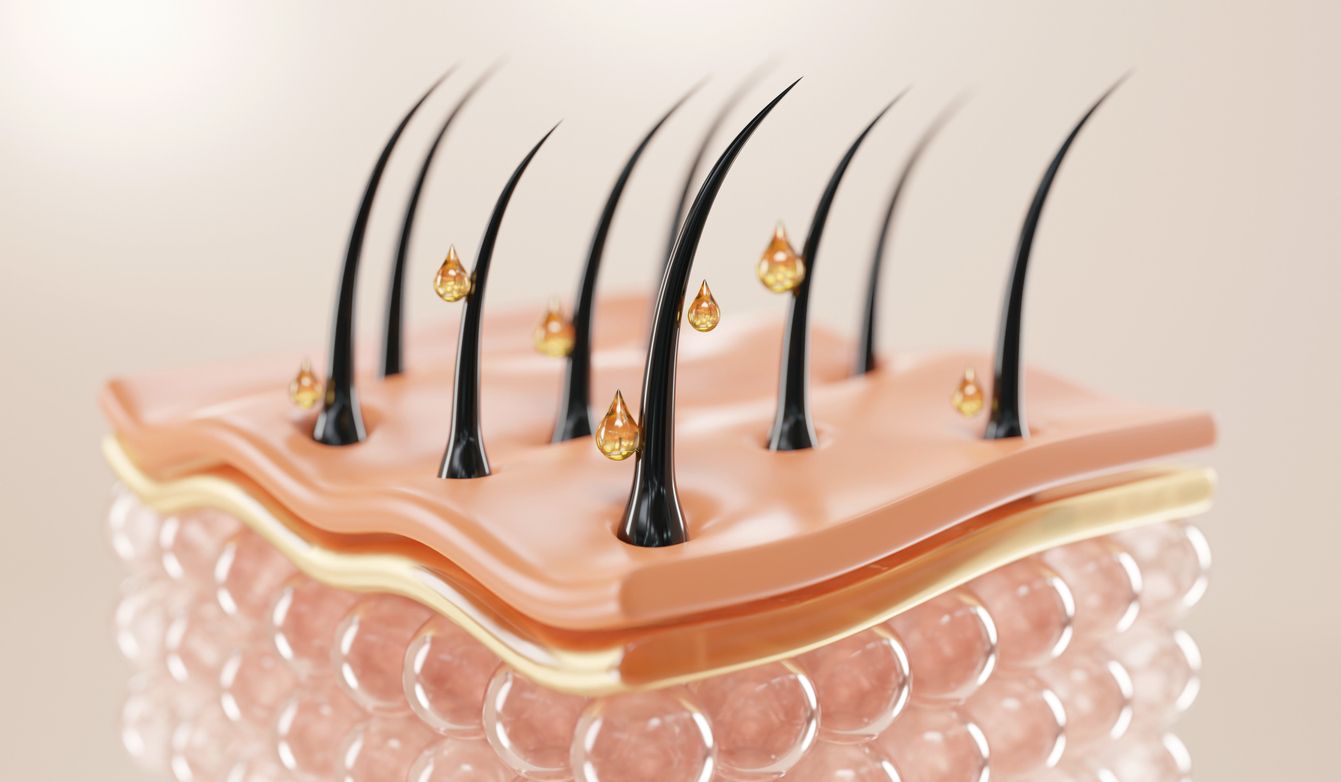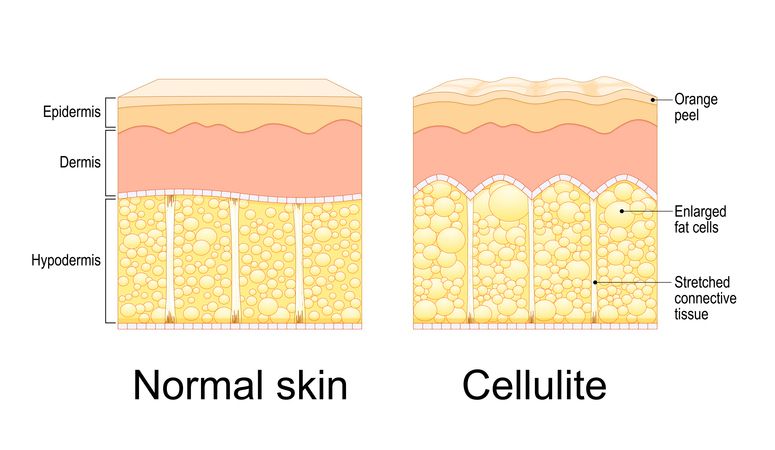
Author: Natalie Ng|Updated: 9 May 2025
You might start noticing small changes before crown thinning becomes more obvious. Maybe your scalp shows through a bit more when your hair’s wet, or your part looks a little wider than it used to. Your ponytail might feel thinner, your hair might not have the same bounce, or the crown of your head might catch the light in ways it didn’t before. These shifts can creep in slowly. You might look at old photos and spot less density, or feel like your hair isn’t growing as fast. Maybe your scalp gets sunburnt more easily, or it takes more effort to style your hair the way you like. Crown thinning hair is common, and spotting these signs early can make a difference. Keep reading to see what to look for and how these changes could be connected to your hair growth, your follicles, and the health of your hair long term.

Visible Scalp When Hair Is Wet

Increased scalp exposure at the crown
It’s normal for the scalp to show a little when hair is wet, but noticeable changes—especially at the crown—can point to early crown thinning. This area naturally parts in a spiral pattern, so compare how much of the scalp shows now compared to a few months ago. A wider gap or more visible skin could mean the hair follicles in that region are shrinking or producing thinner strands.
Subtle signs of hair thinning
If you’ve started to notice more of your scalp after washing your hair, especially where the crown sits, that may be a sign of early hair thinning. This could be linked to male pattern hair loss, female hair loss, or even traction alopecia if there's been repeated stress on the area. Looking at older photos can help you track whether the area has gradually changed over time.
When to take action
An increase in scalp visibility can be a sign that the crown is losing volume. This might affect blood flow or signal a shift in the hair growth cycle. If left unaddressed, it could lead to further hair loss or even permanent thinning. Checking in with a medical professional early on helps clarify whether you’re experiencing temporary hair loss or something more long-term, like androgenetic alopecia. Early support can help protect healthy hair follicles, improve hair density, and promote hair regrowth through targeted treatments or hair restoration surgery such as FUE hair transplant.

Widening Part Line
Subtle changes in the part line
A part line that slowly gets wider over time is one of the earliest signs of crown thinning hair. It may start off small—just a slightly more visible line when styling your hair—but if you begin noticing more scalp where hair used to cover easily, your crown may be thinning.
Hair thinning at the crown often begins as the hair follicles shrink, which can lead to a less dense part. This is common in both male pattern hair loss and female pattern baldness, especially during the early stages of androgenetic alopecia. As hair follicles shrink or stop producing thick strands, the part line begins to open up, especially under bright light.
Tracking part line changes
Keep an eye on how your part looks in different lighting, like under sunlight or a vanity mirror. Take clear photos of your part every couple of months from the same angle and under similar lighting. This helps you spot slow, progressive changes in hair density along the part line and crown area.
Try to compare these new photos with older ones taken at family events or from your social media. If you notice the line looking noticeably wider, or if it takes more effort to cover it during styling, it may be linked to early signs of female pattern hair loss or male hair loss.
Early part widening and follicle health
A widening part often points to changes in the hair growth cycle. As healthy hair follicles begin to shrink or go dormant, the hair becomes finer and more spaced out. This makes the scalp more visible, even without shedding large amounts of hair. If ignored, it could lead to more advanced thinning or even permanent hair loss in that area.
Spotting these changes early gives you a chance to support your existing hair follicles. Medical treatments, lifestyle adjustments, and early interventions like platelet rich plasma therapy or low-level laser therapy can help stimulate hair growth and promote healthy hair. In more advanced cases, treatments such as FUE hair transplant or hair restoration surgery may be considered to restore coverage at the crown.
Book Now to Experience
F8 Hair Regrowth Treatment
1 Minute Self-Registration
Date should not be before minimal date

Changes in Hair Texture and Volume
Early shifts in how your hair feels
Hair thinning doesn’t always start with visible gaps. One of the first signs can be how your hair feels when you touch it. If it used to feel thick and strong but now feels finer, weaker, or lacks structure, these changes could point to early crown thinning hair. The texture may become softer or more brittle, and styling your hair might not give the same results as before.
This can happen as hair follicles begin to shrink, producing thinner strands during each growth cycle. Over time, this can reduce your overall hair density, especially at the crown where male pattern hair loss and female pattern hair loss often start.
Volume loss over time
You may notice that your hair looks flatter or doesn’t hold volume like it used to. Even with styling products or blow-drying, the lift may not last as long. This is often linked to a decrease in the number of active, healthy hair follicles at the crown. With fewer thick strands, the hair becomes less full, and the overall appearance may start to change.
If you used to rely on natural volume or minimal styling and now need more product or heat tools to get the same effect, this could be a sign your crown is losing density.
Small signs that show early changes
When hair becomes thinner and more fragile, breakage can also increase. You might notice more split ends or hair that snaps easily when brushing or styling. These texture changes don’t always mean hair is falling out—they often signal that the existing hair is becoming weaker due to a shift in the hair growth cycle.
Hair that once felt strong may begin to feel cotton-like or lack resistance when you run your fingers through it. These subtle shifts often appear before visible thinning or a balding crown becomes obvious.
Supporting healthy hair growth at this stage is important. Targeted treatments that improve blood flow, nourish the scalp, or stimulate hair growth can help protect existing hair and promote hair regrowth before the thinning becomes more advanced.

More Visible Scalp Under Direct Light

Increased light reflection at the crown
One of the easiest ways to spot early crown thinning is by checking your scalp under strong lighting. You might notice that your crown reflects more light than before—whether you're standing under bathroom lights, sitting by a window, or out in the sun. This added brightness often comes from reduced hair density, especially if the hair at the crown has started to thin.
A thinning crown allows more light to pass between the strands, making the scalp easier to see. Even if your hair looks normal in softer lighting, direct light can reveal areas where the follicles aren’t producing thick strands anymore.
Using lighting to spot early signs
To check for changes, use a handheld mirror to look at the crown from different angles while standing under direct overhead lighting. Look for areas where the scalp shows through more clearly than it used to, even if the rest of your hair appears unchanged. You may spot increased spacing between strands, reduced coverage around the whorl, or parts of the crown that seem more exposed.
This sign often shows up before other symptoms like a receding hairline or noticeable shedding. It's especially common in androgenetic alopecia and other types of hair loss where the crown is the first area to lose volume.
Why the crown responds differently
The crown area is often one of the first places affected by male pattern baldness, female pattern hair loss, or changes in the hair growth cycle. As the follicles in that region start to shrink, the hair becomes thinner and less able to block light. Even without large amounts of shed hair, a visible scalp under light can suggest early-stage thinning.
Spotting this change early allows you to take steps to prevent further hair loss. Treatments that encourage hair growth, increase blood flow to the scalp, and support healthy hair follicles—like platelet rich plasma therapy or low-level light therapy—can help preserve hair density in this area before the thinning becomes more advanced.

Decreased Ponytail Thickness
Gradual drop in ponytail volume
If you regularly tie your hair up, you might notice your ponytail doesn’t feel as full as it used to. You may need to wrap your hair tie around more times than before, or your ponytail might look thinner in photos. These changes can be early signs of crown thinning hair, especially when the loss happens gradually.
As hair follicles begin to shrink or stop producing thick strands, the overall density of the hair decreases. This is often linked to female pattern hair loss, androgenetic alopecia, or stress-related hair thinning. The crown area may be thinning even if you're not seeing large amounts of hair fall.
Tracking changes over time
To spot patterns, take a monthly photo of your ponytail from the same angle and in similar lighting. You can also use a soft measuring tape to check the circumference. A consistent drop in size can be a strong signal that your hair density is changing.
These changes often start at the crown and spread outward. You may notice that your ponytail used to feel firm and round but now feels thinner, flatter, or uneven in texture. Even if the front and sides of your hair still seem thick, the crown may be losing volume first.
Why ponytail changes point to crown thinning
Hair at the crown plays a big role in the bulk of a ponytail. As that area thins, your ponytail reflects the loss, even if you're not seeing much breakage or shedding. This shift doesn’t always involve permanent hair loss right away—but if ignored, it can progress into more advanced thinning that affects your ability to grow a fuller ponytail again.
If you're noticing these changes, it may be time to check in with a medical professional. They can assess whether the thinning is temporary or part of a longer-term pattern. Early support, such as treatments that promote healthy hair growth and protect existing hair follicles, can help prevent further loss and keep your hair thicker for longer.
Book Now to Experience
F8 Hair Regrowth Treatment
1 Minute Self-Registration
Date should not be before minimal date

Excessive Hair in Brush or Shower Drain
Daily shedding increases
It’s normal to shed some hair each day—typically around 50 to 100 strands. But if you’re noticing more hair collecting in your brush, shower drain, or on your pillow, it could point to early signs of crown thinning. This type of shedding doesn’t always lead to bald patches immediately, but a steady increase may signal that your hair growth cycle is shifting.
Hair shedding linked to crown thinning often starts gradually. It can be triggered by stress, hormonal changes, or conditions like female pattern hair loss, male pattern baldness, or traction alopecia. In some cases, it may also be related to temporary disruptions like illness or certain medications that affect hair follicles.
Shedding amounts to watch
Pay attention to how much hair you’re cleaning out of your brush or drain. If you’re used to seeing a few strands, but that number has grown noticeably, document it. Here’s a quick guide:
• Hairbrush: Normal – 10–20 strands per use | Warning sign – 30+ strands
• Shower drain: Normal – 20–30 strands per wash | Warning sign – 50+ strands
• Pillow: Normal – 5–10 strands | Warning sign – 15+ strands each morning
• Running fingers through hair: Normal – 2–3 strands | Warning sign – 8+ strands each time
Taking weekly photos of your brush or drain can help you spot patterns and track changes in hair shedding. If you notice consistent increases, it could be tied to early-stage crown balding or thinning.
Connection to thinning crown
When hair loss increases, it doesn’t always affect all areas evenly. The crown is often one of the first regions where thinning begins—especially in male pattern and female pattern hair loss. As more strands fall and fewer grow back, the density in that area drops, leading to a thinner appearance over time.
If you’re seeing more hair than usual in your daily grooming routine, speak with a medical professional. They can help identify whether this is part of a larger pattern like androgenetic alopecia, or if it’s linked to reversible conditions. Early treatment can protect healthy hair follicles, support hair regrowth, and prevent further hair loss at the crown.

Slower Hair Growth Rate

Noticeable drop in length over time
If you feel like your hair isn’t growing as quickly as it used to, this could be an early sign of crown thinning. You may find that you’re booking haircuts less often or that your hair isn’t reaching the same length it once did. These small changes often point to shifts in the hair growth cycle, especially when hair follicles begin to slow down or enter the resting phase more frequently.
This kind of slowdown can happen with male pattern hair loss, female hair loss, or as a result of conditions that shrink hair follicles or affect blood flow to the scalp.
Tracking growth changes
One way to monitor this is by measuring the same strand of hair each month. Hair typically grows about half an inch per month. If you notice less growth over a few months, or if it takes much longer to regrow hair in areas where it's thinned, your follicles may not be staying in the active growth phase.
You can also track how often you’ve needed a trim over the past year. If you're stretching the time between cuts more than usual without much length gain, it may be due to a decrease in healthy hair growth at the crown.
Why growth slows with thinning
As crown thinning develops, hair follicles often become less active. This can lead to shorter, finer strands—or no new hair at all—especially in areas where thinning is starting. This is common in early-stage androgenetic alopecia or other types of hair loss that affect hair at the crown.
If you notice a slower growth rate, especially in the crown area, it may be time to speak with a medical professional. Early treatment options that promote hair regrowth and support the hair growth cycle can help restore fuller coverage and prevent further hair loss.

Scalp Sunburn Occurs More Easily
Increased sensitivity at the crown
If your scalp feels tender or gets sunburnt more easily after spending time outdoors, it could be a sign of early crown thinning. Hair normally acts as a natural shield, especially at the crown. When hair density decreases in this area, the scalp becomes more exposed to UV rays—even during short periods in the sun.
This is often one of the first signs people notice when experiencing thinning crown or crown hair loss. It usually happens before bald spots appear, especially in people with lighter hair or thinner strands.
Exposure reveals early thinning
When the crown thins, the skin underneath has less protection. You might start feeling warmth or discomfort on your scalp after being outside, even on cloudy days. If you’ve never had to worry about sunburn on your head but now feel the need to wear hats or use sunscreen, it could be linked to reduced hair coverage at the crown.
This kind of sensitivity is common in both male pattern baldness and female pattern hair loss. The change in coverage happens gradually, but once the scalp is regularly exposed, sunburn can become a frequent issue.
Connection to hair loss progression
More frequent sunburns at the crown often signal that the hair in this area is becoming too sparse to offer proper coverage. It can point to shrinking hair follicles or changes in the hair growth cycle. While it doesn’t always mean permanent hair loss, ignoring this sign can lead to more advanced thinning.
Protecting the crown from UV exposure is important, especially if you're trying to promote healthy hair growth or prevent further hair loss. If you're noticing this kind of change, consider speaking with a medical professional about treatment options that can stimulate hair growth and protect existing hair follicles.
Book Now to Experience
F8 Hair Regrowth Treatment
1 Minute Self-Registration
Date should not be before minimal date

Hair Styling Takes More Effort

Styling feels less effective
If styling your hair feels more difficult than it used to—especially around the crown—it could be an early sign of hair thinning. You might notice your usual techniques aren’t giving you the same volume, or that you’re spending more time trying to cover areas where the scalp is starting to show. This often happens when the density of the hair at the crown drops, even if other areas still appear full.
Hair that once held its shape might now fall flat or separate easily, exposing thinner spots. These subtle shifts are common in early stages of male pattern or female pattern hair loss, where the hair at the crown begins to lose structure.
More product, less hold
You may find yourself using more styling products than before just to get the same lift or control. Volumizing sprays and mousses might stop giving the results they once did—not because they’re ineffective, but because there’s less hair for them to work with. Thinning hair responds differently to heat and product, which makes it harder to shape and maintain a full look throughout the day.
If you’re restyling more often, using new tools, or constantly adjusting your hair to keep volume at the crown, these changes could signal a shift in your hair growth pattern.
Why styling changes reflect thinning
As the number of healthy hair follicles at the crown drops, the remaining hair may become too fine to support certain styles. You might also notice your hair holds less weight, feels lighter, or behaves differently when dry. These changes don’t always come with visible shedding, but they often show up early in conditions like androgenetic alopecia or female hair loss.
If daily styling takes noticeably more effort, it may be worth looking into treatment options that support healthy hair follicles and improve hair density. Treatments that promote hair regrowth or stimulate blood flow to the scalp can help you maintain coverage and keep styling simple again.

F8 Hair Regrowth Treatment for Early Crown Thinning
A targeted way to support early hair thinning
If you’ve started noticing signs of crown thinning—like a widening part line, thinner texture, or more scalp showing under light—it’s worth exploring treatments that support healthy hair follicles and promote hair regrowth before the issue becomes harder to manage. One non-invasive option that addresses these early signs is the F8 Hair Regrowth Treatment.
This treatment is designed to improve scalp and hair health through a combination of low-energy laser technology and a professional-grade hair growth serum. It helps stimulate inactive follicles, support the hair papilla, and encourage stronger hair at the crown where thinning often starts.
How F8 Hair Regrowth Treatment works
The treatment begins with a scalp assessment using 200x magnification to check hair follicle condition and spot early signs of hair thinning. Once areas of concern are confirmed, a trained therapist applies low-energy laser light across the scalp to activate weakened follicles and improve blood flow around the crown. This step helps increase the delivery of nutrients to the roots, creating a more supportive environment for hair growth.
After the laser session, a lightweight hair growth serum is applied to hydrate the scalp, unclog follicles, and reduce excess oil. This helps balance the scalp and strengthens the skin barrier—two key steps in preventing further hair loss and supporting healthy hair regrowth.
Why it works for early crown thinning
F8 is especially useful for those experiencing the early signs of crown thinning hair, male pattern baldness, or female pattern hair loss. By increasing blood flow and activating existing hair follicles, it helps slow the progression of thinning and supports stronger, fuller hair over time. Because it’s non-surgical, there’s no downtime, and it’s suitable for both men and women experiencing thinning at the crown or other signs of pattern hair loss.
It can also help maintain results after other treatments like hair transplant surgery, or act as a standalone option for those wanting to prevent permanent hair loss and improve the health of their scalp and existing hair.
The benefits at a glance
• Strengthens hair follicles and improves scalp condition
• Increases microcirculation to support nutrient delivery
• Unclogs follicles and balances sebum production
• No recovery time or irritation
• Suitable for long-term maintenance and prevention
If you’ve noticed early signs of thinning around the crown, now is a good time to act.
Book a consultation to learn if the F8 Hair Regrowth Treatment can support your hair goals and help protect your hair before thinning becomes harder to reverse.Book Now to Experience
F8 Hair Regrowth Treatment
1 Minute Self-Registration
Date should not be before minimal date
FAQ
1. Can stress cause thinning hair at the crown?
Yes, chronic stress can disrupt the hair growth cycle and lead to temporary hair loss, including thinning at the crown. This condition, known as telogen effluvium, causes more hair follicles to enter the resting phase prematurely. While it doesn’t always lead to permanent hair loss, it can trigger visible thinning if left unaddressed. Managing stress levels and supporting healthy hair follicles through lifestyle changes or treatment can help prevent further hair thinning.
2. What’s the difference between male pattern baldness and alopecia areata?
Male pattern baldness, or androgenetic alopecia, is a gradual type of hair loss driven by genetics and male sex hormones, typically starting at the hairline or crown. In contrast, alopecia areata is an autoimmune condition that causes sudden hair loss in small patches, including the crown or other areas of the scalp. While both affect hair growth, they have different causes, patterns, and treatment paths. Consulting a medical professional is important for a clear diagnosis and personalized hair loss treatment plan.
3. Can hair thinning from certain medications be reversed?
Some medications can trigger hair loss as a side effect, which often affects the crown and part line. This type of thinning is usually temporary and resolves once the medication is adjusted or stopped. Common culprits include chemotherapy drugs, certain blood pressure medications, and hormone treatments. If you suspect a medication is affecting your hair density, speak with a healthcare provider before making any changes, as early adjustments can support healthy hair regrowth.
4. Does traction alopecia affect hair at the crown?
Yes, traction alopecia can affect the crown, especially if you frequently wear tight ponytails, buns, or hairstyles that pull on the scalp. Over time, constant tension can damage existing hair follicles, shrink hair follicles, and lead to permanent hair loss in severe cases. If detected early, stopping the pulling force and switching to gentler styles can help prevent further hair loss and promote healthy hair growth.
5. Is hair transplant surgery suitable for early crown thinning?
Hair transplant surgery, including FUE hair transplant, is generally more effective once hair loss has stabilized. For early-stage thinning crown, non-invasive treatments that promote healthy hair follicles and stimulate hair growth—such as F8 Hair Regrowth Treatment—may be more appropriate. These methods support existing follicles and delay the need for surgical intervention. A hair transplant is typically considered when there is more defined crown balding or complete baldness in a targeted area.
Recommended Articles
COPYRIGHT© NEW BEAUTY MANAGEMENT LIMITED 2025. ALL RIGHT RESERVED.




